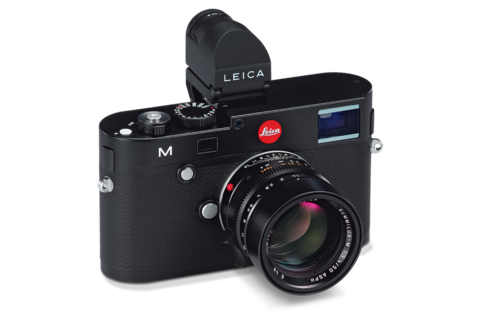After the first flush of novelty in using an electronic viewfinder with the latest Leica M, I have now returned to traditional loyalties. I now much prefer the good old rangefinder and regard the add-on electronic finder as a tool for special projects and lenses.

In common with all hot-shoe-mounted viewfinders from any manufacturer, the Leica VF-2 is an ugly barnacle and spoils the lines of a classic design. What’s more, this is now a five-year-old concept, originally paired with the Olympus MFT range.
It is comprehensively out-gunned by the latest models such as the outstanding Visoflex launched with the new Leica T. It is ironic that Leica’s “cheap” ILC now has a far better viewfinder than the flagship M.
Above all, however, Leica’s traditional rangefinder performs flawlessly in nearly all lighting conditions and renders the EVF superfluous. In contrast, using modern mirrorless cameras in strong sunlight can often be a challenge. Almost all rear screens, however bright, are virtually useless in strong glare. And electronic viewfinders are often disappointing in other respects, not least in the danger of image lag. Another problem comes with the wearing of sunglasses, whether vanilla or prescription. The rangefinder copes with everything you can throw at it.
During the summer I have been using prescription sunglasses with a Polaroid filter. Maybe it was a mistake to opt for Polaroid but I’m stuck with it now. I should have realised. Unfortunately, the VF-2 viewfinder (used on a Leica X Vario but would be the same on the M) was rendered virtually unusable because of severe banding caused by the Polaroid coating. It is necessary always to remove glasses when taking photographs and I find this frustrating. It happens on all EVFs, including the new Visoflex on the Leica T. At other times, with normal glasses, I have few problems and can manage well with most electronic viewfinders.
This August in brilliantly sunny Greece I have again been reminded that the good old rangefinder is preeminent in most situations, especially in strong sunlight. The Leica M (without the optional electronic viewfinder which has stayed glued to the X Vario) has been a real trooper and has given me absolutely no problems however bright the surroundings.
It is a salutary thought that this viewfinder has not been significantly improved since 1954 when the Leica M3 was announced. In fact, many say that the M3 still has the brightest viewfinder of any Leica. But any modern rangefinder offers easy focus and accurate composition even in adverse conditions. Only in extreme low light and low-contrast situations is is sometimes difficult to nail focus.
In the past couple of years electronic viewfinders have improved dramatically in resolution and size. Yet even the acclaimed massive finder of the Fuji X-T1, with its optional separate focus window, or the large Visoflex of the T are in some ways inferior beasts to the humble old Leica rangefinder. With the rangefinder there is no lag, no compulsory chimping of the last picture and no blanking out as the shutter activates (as on DSLRs). It just makes you feel more in control. Of course, EVFs do offer exposure, depth-of-field and other settings information that the simple optical viewfinder lacks. But do we really need all that stuff cluttering up the view? Going back to the rangefinder is a trade worth making in my view.
Some M owners, I am sure, feel obliged to use the EVF simply because it is there. I don’t know any of them. For the M functions far better in rangefinder mode with most lenses. I view the VF-2 as a useful accessory for wider lenses (wider than 28mm for which there are no framelines in the finder) and occasionally as a means of seeing a larger image with lenses of 75mm and over. For most general photography, using 28, 35 or 50mm lenses, I far prefer to stick with the good old rangefinder. It is still the essence of the M.

Nice pictures!!!!!!!!!
What about Fuji’s hybrid viewfinder on the X100S and X-Pro 1? That gives the best of both worlds.
The Fuji isn’t a rangefinder, Matt. Fuji have made an effort, by introducing a sort of split image aid but I find it all but useless. The beauty of the Leica rangefinder is that it is a precise instrument (if adjusted correctly) and makes it simple to nail focus in most situations while still having the benefit of a large, clear optical view.